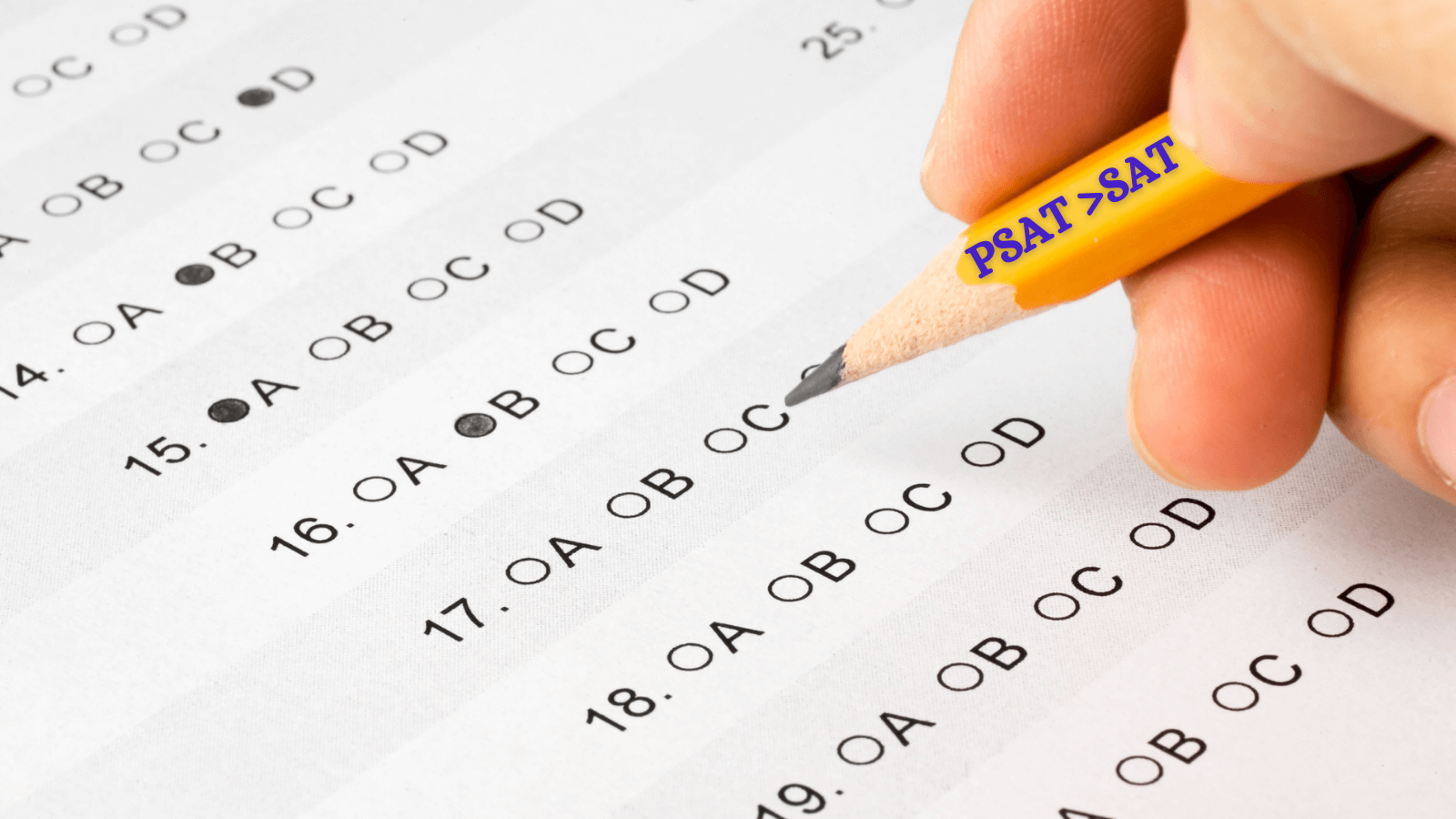Student-centric advice and objective recommendations
Higher education has never been more confusing or expensive. Our goal is to help you navigate the very big decisions related to higher ed with objective information and expert advice. Each piece of content on the site is original, based on extensive research, and reviewed by multiple editors, including a subject matter expert. This ensures that all of our content is up-to-date, useful, accurate, and thorough.
Our reviews and recommendations are based on extensive research, testing, and feedback. We may receive commission from links on our website, but that doesn’t affect our editors’ opinions. Our marketing partners don’t review, approve or endorse our editorial content. It’s accurate to the best of our knowledge when posted. You can find a complete list of our partners here.
The Digital PSAT: Everything You Need to Know
 By
Cait Williams
By
Cait Williams 
Cait Williams is a Content Writer at Scholarships360. Cait recently graduated from Ohio University with a degree in Journalism and Strategic Communications. During her time at OU, was active in the outdoor recreation community.
Full BioLearn about our editorial policies

Maria Geiger is Director of Content at Scholarships360. She is a former online educational technology instructor and adjunct writing instructor. In addition to education reform, Maria’s interests include viewpoint diversity, blended/flipped learning, digital communication, and integrating media/web tools into the curriculum to better facilitate student engagement. Maria earned both a B.A. and an M.A. in English Literature from Monmouth University, an M. Ed. in Education from Monmouth University, and a Virtual Online Teaching Certificate (VOLT) from the University of Pennsylvania.
Full BioLearn about our editorial policies

Just like the SAT and the ACT, the PSAT is now digital. This means that you’ll no longer have the option to take a paper format of the test. While the structure of the test is slightly different, the content itself won’t be anything new, especially since this will likely be your first time taking this test.
Also see: 2023-2024 SAT test dates
The structure
Let’s talk about the structure of the digital PSAT! The structure of the test has changed slightly, but the content itself is fairly simple and hasn’t changed much from the paper format. It consists of only two sections: Math, and Reading and Writing. Each section is broken into two parts, which means there are four parts to the test in total. Below is a breakdown of the sections, number of questions and time allotted for each section.
| Section | Number of questions | Time allotted |
| Math | 44 questions | 70 minutes (two 35 minute sections) |
| Reading and Writing | 54 questions | 64 minutes (two 32 minute sections) |
| Total | 98 questions | 134 minutes |
Content
As for what to expect on the digital PSAT, if you’ve had friends or maybe an older sibling take it before you, you can expect to be tested on all the same material and content areas. While questions may be more concisely written, and the reading passages shorter, the skills used to answer those questions will remain the same. So, don’t fret and especially don’t worry that this new digital PSAT is designed to be harder, it isn’t! This test is simply advancing with technology!
Testing devices
Students will use devices that their school provides for them, so you shouldn’t need to worry about bringing your own device. If your school does require you to bring your own device, they will tell you in advance, as you will need to ensure your device meets a few key requirements.
Preparing for the digital PSAT
Preparing for the digital PSAT will remain largely the same, the only thing you might want to add in is taking some online practice tests to become familiar with the digital format. It’s likely that you’ve taken on online tests by this point, so hopefully there is nothing there that trips you up.
If your school has registered your or the PSAT, you should be able to take advantage of their online practice resources on their website, which includes a full length practice test!
Scoring
The scoring for the test has not changed. So let’s take a look at scoring, when you can expect to receive your scores and how you’ll receive them.
On the score report you receive there will be four scores:
- A total score
- A score for each section (Math and one for Reading and Writing)
- An NMSC index score
Your total score on the PSAT will be between 320 – 1520, and each section is between 160-760, which means each section contributes equally to your score. Each score will also have a score range that shows students what percentile their score fell into. Scores are typically available online 4-6 weeks after you have taken the test. We won’t talk here about what a good PSAT score is, because we have a whole other article just for that! If you’re curious how your PSAT score can be used to predict your SAT score, we have an article about that too!
Depending on how you sign up, students can even receive text notifications when their scores are ready! In order to do this, students will need to provide their mobile number on test day. For students who would like another way to receive scores you can receive a copy of your test report from your school counselor.
The National Merit Scholarship
In addition to your score report above, you’ll also receive a National Merit Scholarship Selection Index Score. This score is useful for the National Merit Scholarship Association to screen applicants who enter their scholarships programs and for the National Merit Scholarship.
Below we’ll show you how the NMSC score is calculated!
| How to calculate your score | Example |
| Multiply your reading and writing score by two | 540 x 2 = 1080 |
| Add your math score | 1080 + 490 = 1570 |
| Finally, divide by ten | 1570/10 = 157 |
Generally, students need a NMSC score in the top one percent of test takers. This means that the score you need can vary each year.
Registering for the PSAT
Most students who take the PSAT will do so through their school, which means you’ll automatically be registered. However, if your school does not offer the PSAT you may be eligible to register through another local school.
Don’t miss:Top Scholarships for high school sophomores
Frequently asked questions about the digital PSAT
Can you back to questions the digital PSAT?
Can you take the PSAT online?
How do you prepare for the digital PSAT?
How is the digital PSAT different?




 SAT" printed on his pencil">
SAT" printed on his pencil">
